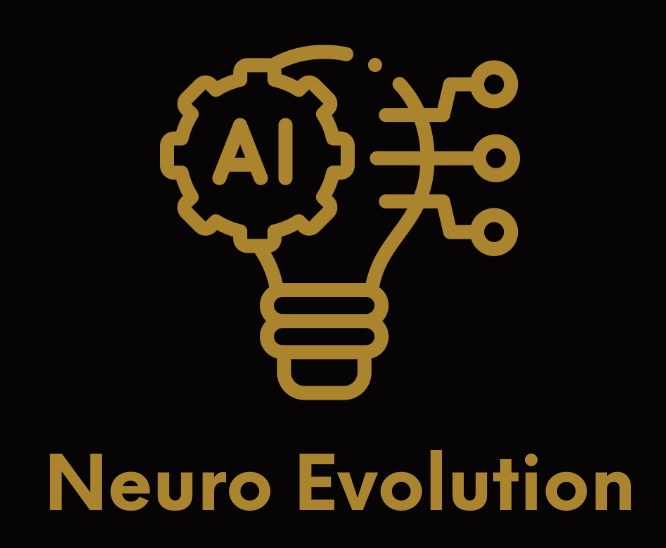AI's Trillion-Dollar Promise and Peril: Navigating the Generative Revolution's Rewards and Risks
From Banking Breakthroughs to Pharma Frontiers: How Generative AI is Reshaping Industries and Redefining Work
Dear NeuroEvolution.AI Community,
Welcome to our latest newsletter, where we explore the cutting-edge developments in AI and their profound implications for businesses and society. As we navigate this rapidly evolving landscape, it's crucial to understand both the immense potential and the challenges that come with these advancements.
Continue to evolve from Neuro Evolution’s previous posts:
AI Knowledge Paradox: From Socratic Wisdom to Retrieval-Augmented Generation
The Importance of Learning and Its Parallel in Artificial Intelligence
Generative AI: The Next Frontier of Productivity
The rise of generative AI is reshaping the business world at an unprecedented pace. A McKinsey report reveals that this technology could add a staggering $2.6 trillion to $4.4 trillion annually to the global economy. This transformative potential is comparable to the entire GDP of the United Kingdom!
Key takeaways:
Generative AI could increase the impact of all artificial intelligence by 15 to 40 percent.
Customer operations, marketing and sales, software engineering, and R&D are poised to capture about 75% of this value.
The technology is expected to boost labor productivity growth by 0.1 to 0.6 percent annually through 2040 depending on the rate of technology adoption and the new skills workers will need to learn.
Generative AI in Banking and Pharmaceuticals: Industry Spotlights
As we dive deeper into the McKinsey report on Generative AI, let's explore how this technology is set to transform two critical sectors: banking and pharmaceuticals/medical products.
Spotlight: Banking
Generative AI could be a game-changer for the banking industry, potentially increasing productivity by 2.8% to 4.7% of the industry's annual revenues. This translates to an additional $200 billion to $340 billion in value annually.
Key impacts:
Virtual expertise: Generative AI can act as an always-on, deep technical support system for employees, improving customer experience and decision-making.
Code acceleration: The technology can help reduce technical debt and deliver software faster, addressing the industry's complex IT architecture challenges.
Personalized content at scale: AI can create tailored marketing and sales content, enhancing customer engagement and regulatory compliance.
Example of a Real-World Application: Morgan Stanley has partnered with OpenAi to utilize the AI assistant GPT-4 so:
Financial Advisors can query large amounts of data, receiving answers in an easily digestible format.
All responses are generated exclusively from MSWM content, with links to source documents for transparency.
Considerations for banks:
Regulatory environment: The level of regulation varies for different processes, from customer service to credit risk scoring.
Data constraints: Banks need to balance the use of public data with protecting sensitive customer information.
Adoption strategy: Banks must decide whether to use AI agents integrated through APIs or as copilots that give real-time suggestions to human agents.
Spotlight: Pharmaceuticals and Medical Products
The pharmaceutical and medical products industries stand to gain significantly from generative AI, with potential value increases of 2.6% to 4.5% of annual revenues, or $60 billion to $110 billion annually.
Key areas of impact:
Drug discovery: Generative AI can accelerate the identification of potential drug compounds, significantly reducing the time and cost of early-stage research.
Indication finding: AI models can help identify and prioritize new indications for existing drugs by analyzing patient data and establishing relationships with evidence-backed indications.
Case study: Some pharma companies using this approach have reported high success rates in clinical trials for the top five indications recommended by foundation models for tested drugs.
Challenges and considerations:
Human oversight: Quality checks and human-in-the-loop processes are crucial, especially for critical tasks like drug discovery.
Explainability: The lack of transparency in AI-generated content could make it difficult to update models and scan for potential risks.
Privacy: The use of clinical images and medical records increases the risk of protected health information leaks.
These industry spotlights demonstrate the transformative potential of generative AI across different sectors. However, they also highlight the need for careful implementation, considering regulatory, ethical, and practical challenges unique to each industry.
Questions for our community:
For those in the banking or pharmaceutical industries, how do you see generative AI reshaping your specific role or department?
What steps can these industries take to balance innovation with regulatory compliance and data privacy concerns?
How might the lessons from these industries apply to other sectors looking to implement generative AI?
The Double-Edged Sword of AI Integration
While the potential benefits of AI are immense, recent events remind us of the vulnerabilities that come with increased technological dependence. The CrowdStrike incident, where a single software update took 8.5 million windows devices offline globally, serves as a stark reminder of the risks associated with centralized systems.
Key points:
The outage affected critical sectors including airlines, hospitals, and banks.
It highlights the need for IT resilience and diversification in data storage and operational systems.
Food for thought: How can businesses balance the efficiency of centralized systems with the need for resilience and redundancy?
The Changing Nature of Work in the AI Era
As AI capabilities expand, the nature of work is evolving rapidly. The McKinsey report suggests that generative AI could have the most significant impact on knowledge work, particularly activities involving decision-making and collaboration.
Interesting findings:
The technical potential to automate the application of expertise jumped 34 percentage points.
Potential to automate management and develop talent increased from 16% in 2017 to 49% in 2023.
Question to explore: How can workers and organizations adapt to these changes and ensure a smooth transition in the AI-driven workplace?
Navigating the Ethical Landscape of AI
As AI becomes more integrated into our daily lives and business operations, companies face increasing pressure to address ethical concerns and societal impacts.
Key considerations:
Balancing the benefits of AI with potential risks such as bias, privacy concerns, and job displacement.
The importance of responsible AI development and deployment, including human oversight and diverse perspectives.
Challenge to consider: How can your organization foster a culture of responsible AI innovation while maintaining competitiveness?
Conclusion:
The AI revolution is upon us, bringing with it unprecedented opportunities and challenges. As we continue to explore and harness this technology, it's crucial that we do so with a balanced approach – embracing innovation while remaining mindful of potential risks and ethical considerations.
At NeuroEvolution.AI, we're committed to fostering a community where curiosity leads the way in exploring AI's possibilities, ensuring a future where technology is harnessed responsibly and beneficially for humanity. We encourage you to share your thoughts, experiences, and questions as we navigate this exciting frontier together.
Stay curious, experiment, and let’s build the future together!





